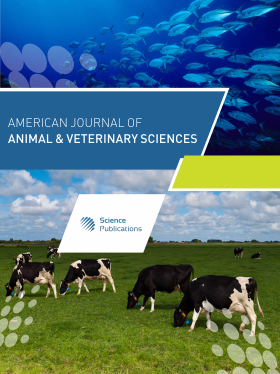In Sacco and in vitro Evaluation of Heating and Formaldehyde Treated Protein Feed
- 1 Department of Nutrition Science and Feed Technology, Graduate School of Nutrition and Feed Science, IPB University, Bogor, Indonesia
- 2 Department of Animal Nutrition and Feed Technology, Faculty of Animal Science, IPB University, Bogor, Indonesia
Abstract
Massive protein conversion into ammonia in the Rumen (RDP) should be avoided to prevent protein quality deterioration. Heating and formaldehyde treatments are commonly used to decrease Rumen-Degradable Protein (RDP), but it rarely used to protect local feed. We aimed to compare the effectiveness of heating and formaldehyde treatments in decreasing the RDP of local feed. The use of fistulated cattle, treatments, and procedures used in this study have been ethically cleared by the animal ethics committee, at IPB University. This study used a 5×3 factorial randomized block design with three replications with a sample size was 45. We used two factors; the 1st was high RDP feeds (TD = Tempe Dregs, BW = Brewery Waste, NSM = Nigella sativa Meal, SS = Soybean Seeds, CGF = Corn Gluten Feed) and the 2nd was treatment methods (unprotected, heating and formaldehyde). Ruminal degradation was determined using in sacco method. Three cannulated Frisian Holstein Bulls were fed twice daily with Elephant grass and concentrate at a ratio of 60:40 (DM basis). In vitro digestibility was evaluated using two two-stage Tilley and Terry in vitro methods. Parameters observed include nutrient content, in sacco degradation and ruminal degradation kinetics of dry matter, organic matter, crude protein (DM, OM, and CP), and in vitro digestibility. The results showed that protecting protein changed the nutrient content of feeds (1-6%). The DM and OM disappearance had the same pattern. The effective degradation of DM, OM, and CP significantly (p<0.05) decreased up to 17 and 27% in heating and formaldehyde treatments, respectively, compared to unprotected. Heating did not significantly affect the in vitro digestibility. Formaldehyde treatment had the lowest DM, OM, and CP in vitro digestibility (51.39, 74.25, and 45.90%). Heating treatment was effective in reducing the RDP of feed without interfering with feed digestibility.
DOI: https://doi.org/10.3844/ajavsp.2024.74.85

- 3,861 Views
- 2,196 Downloads
- 2 Citations
Download
Keywords
- Formaldehyde
- Heating
- in vitro
- Rumen Degradable Protein
